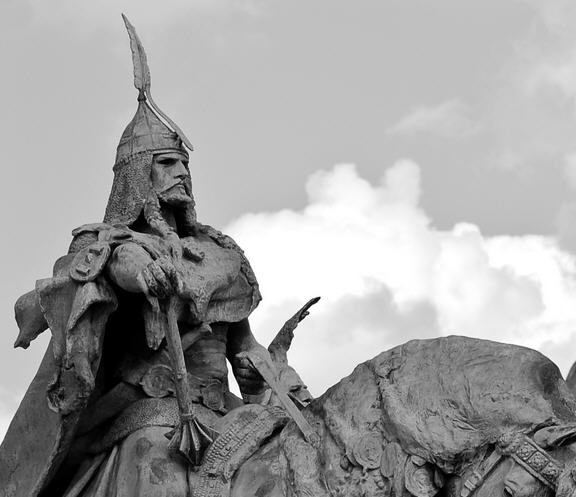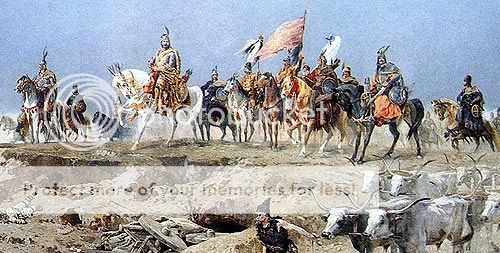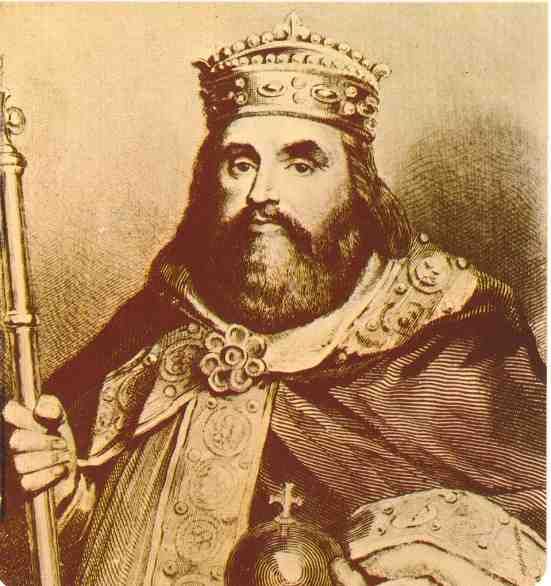MarshalBraginsky
Banned
Entry No. 3: Christianization and Alliances
The Christianization of the Bulgarians, Serbs and Moravians began in 863 AD at the time when the Franks and the Byzantines were at the forefront of the great Catholic-Orthodox rivalry. Though Cyril and Methodius were busy at work with the development of the written script for the Slavonic language, they faced challenges from the Latin priests who did not tolerate the idea of the creation of a fourth alphabet for the Slavic peoples. Yet the idea of allowing the Latin priests to conduct their missionary work in Great Moravia only spurred the Byzantines to continue with their work, and at one point the Moravians will make an alliance with Boris's Bulgaria at Byzantine insistence. Though Boris was not comfortable with the idea of taking orders from Byzantium, he had no choice in the matter.
In Solin, Domagoj soon faced challenges from Croatian nobles who opposed his kowtow to the Franks who did not bother to hide their goal of Catholicizing the Croatian nation. Indeed, Duke Branimir also supported the Papacy against Byzantium until the Byzantines sent an envoy to Solin, threatening Domagoj with an outright conquest if he goes ahead with his plans to turn towards Rome. With the deaths of the entire members of the Trpimirovic dynasty, Domagoj could only rely on the fate of his son Iljko to lead the Croatian nation and he was sent to Constantinople as a diplomatic hostage to ensure Croatia's loyalty to Constantinople instead of Rome.
Civil war soon broke out within the Croatian realm at the start of April of 863 when Domagoj's forces waged their battle against Branimir's army, as Knin and Solin would fall under the latter's control while Domagoj occupied Biograd and Nin. As Domagoj had access to the Adriatic, he was able to build up the first Croat navy to control the seas as he ordered his ships to raid Venetian towns that supplied weapons and other resources to Branimir's army. However, Branimir would also build up his own navy with resources taken from Byzantine Dalmatia in his attempt to capture Biograd na Moru and Nin. While the Croatian Civil War was primarily a war on the seas, Domagoj would have the advantage over Branimir as his faction would receive aid from Moravia as well, in their attempt to influence Domagoj to side with Constantinople.
In the process, Branimir began to launch his attack on the entity called Nerentia, which was inhabited by a group of people called the Neretvani. His attempts to Catholicize the Neretvani was fiercely opposed, and his diversion into the Neretvani lands would prove to be a fatal mistake as Domagoj would launch his own land campaign to take Knin from Branimir's forces. However, Domagoj's siege of Knin would take three weeks to complete because of the hilly terrains that Branimir's forces used to defend their stronghold. Thus Domagoj was compelled to ask for aid from not only Mutimir, but Boris as well. In May of 863 AD, Boris would lead 7,000 Bulgarian soldiers alongside 3,000 of Mutimir's Serbian troops in the siege of Knin, which finally fell on May 29th. Domagoj thanked his allies for the help and changed his mind on the Christian faith he will take. Thus in June of 863 AD, Domagoj and his family officially converted to the Orthodox faith while Mutimir also made the Orthodox faith the official religion of Serbia.
The Christianization of the Bulgarians, Serbs and Moravians began in 863 AD at the time when the Franks and the Byzantines were at the forefront of the great Catholic-Orthodox rivalry. Though Cyril and Methodius were busy at work with the development of the written script for the Slavonic language, they faced challenges from the Latin priests who did not tolerate the idea of the creation of a fourth alphabet for the Slavic peoples. Yet the idea of allowing the Latin priests to conduct their missionary work in Great Moravia only spurred the Byzantines to continue with their work, and at one point the Moravians will make an alliance with Boris's Bulgaria at Byzantine insistence. Though Boris was not comfortable with the idea of taking orders from Byzantium, he had no choice in the matter.
In Solin, Domagoj soon faced challenges from Croatian nobles who opposed his kowtow to the Franks who did not bother to hide their goal of Catholicizing the Croatian nation. Indeed, Duke Branimir also supported the Papacy against Byzantium until the Byzantines sent an envoy to Solin, threatening Domagoj with an outright conquest if he goes ahead with his plans to turn towards Rome. With the deaths of the entire members of the Trpimirovic dynasty, Domagoj could only rely on the fate of his son Iljko to lead the Croatian nation and he was sent to Constantinople as a diplomatic hostage to ensure Croatia's loyalty to Constantinople instead of Rome.
Civil war soon broke out within the Croatian realm at the start of April of 863 when Domagoj's forces waged their battle against Branimir's army, as Knin and Solin would fall under the latter's control while Domagoj occupied Biograd and Nin. As Domagoj had access to the Adriatic, he was able to build up the first Croat navy to control the seas as he ordered his ships to raid Venetian towns that supplied weapons and other resources to Branimir's army. However, Branimir would also build up his own navy with resources taken from Byzantine Dalmatia in his attempt to capture Biograd na Moru and Nin. While the Croatian Civil War was primarily a war on the seas, Domagoj would have the advantage over Branimir as his faction would receive aid from Moravia as well, in their attempt to influence Domagoj to side with Constantinople.
In the process, Branimir began to launch his attack on the entity called Nerentia, which was inhabited by a group of people called the Neretvani. His attempts to Catholicize the Neretvani was fiercely opposed, and his diversion into the Neretvani lands would prove to be a fatal mistake as Domagoj would launch his own land campaign to take Knin from Branimir's forces. However, Domagoj's siege of Knin would take three weeks to complete because of the hilly terrains that Branimir's forces used to defend their stronghold. Thus Domagoj was compelled to ask for aid from not only Mutimir, but Boris as well. In May of 863 AD, Boris would lead 7,000 Bulgarian soldiers alongside 3,000 of Mutimir's Serbian troops in the siege of Knin, which finally fell on May 29th. Domagoj thanked his allies for the help and changed his mind on the Christian faith he will take. Thus in June of 863 AD, Domagoj and his family officially converted to the Orthodox faith while Mutimir also made the Orthodox faith the official religion of Serbia.
Last edited:




